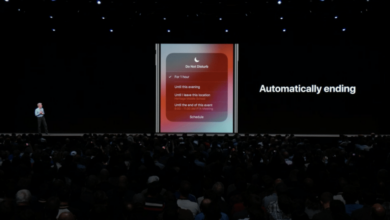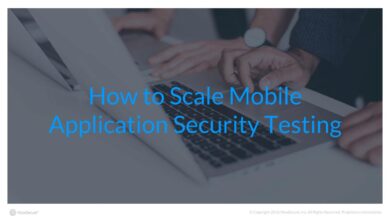
Can Antivirus Software Be Used as a Spying Tool?
Can antivirus software be used as a spying tool? It’s a question that sparks both curiosity and concern. We rely on antivirus software to protect our digital lives, but what if the very tool designed to safeguard our data could be turned against us? This exploration delves into the capabilities of antivirus software, examining its access to our systems and the potential for malicious modification.
We’ll weigh the legal and ethical implications, discuss user protections, and explore the technical aspects of data collection and potential misuse.
The core functionality of antivirus software involves scanning files and processes for malicious code. This requires extensive system access, including the ability to monitor network traffic, access file contents, and interact directly with the operating system. While this access is crucial for effective protection, it also presents a potential vulnerability. A compromised or maliciously designed antivirus program could exploit these permissions to collect sensitive user data, such as passwords, financial information, or private communications, and exfiltrate it to a remote server.
Understanding these risks is crucial for both software developers and users.
Capabilities of Antivirus Software
Antivirus software is a crucial component of modern computer security, offering a range of features designed to protect users from malicious software. Understanding its capabilities, however, requires looking beyond the simple notion of virus scanning. The depth of access and the data handled by these programs raises important questions about privacy and potential misuse.Antivirus software core functionalities typically include real-time scanning of files and processes, scheduled scans of the entire system, malware signature detection, heuristic analysis (identifying suspicious behavior), quarantine of infected files, and removal of detected threats.
Many modern solutions also incorporate features like web protection, email scanning, firewall management, and anti-phishing capabilities.
Data Access Permissions Required by Antivirus Software
To effectively perform its protective functions, antivirus software requires extensive access to the operating system and its resources. This includes access to file system data, running processes, network traffic, and even the system registry. This level of access is necessary to monitor for suspicious activity and to take action against detected threats. For instance, to scan a file for malware, the antivirus software needs read access to that file; to quarantine a malicious process, it needs the ability to terminate that process.
The extent of these permissions varies slightly depending on the specific software and operating system, but the general principle remains consistent: broad access is required for effective protection.
Antivirus Software Interaction with the Operating System Kernel
Antivirus software interacts with the operating system kernel in various ways, often utilizing kernel-level drivers for enhanced capabilities. These drivers allow the software to monitor system events at a very low level, providing early detection of threats. For example, a kernel-level driver might intercept system calls related to file access, allowing the antivirus to scan files before they are opened by applications.
This deep integration into the operating system is essential for real-time protection, but it also means that the antivirus software has a significant amount of control over the system’s behavior. This necessitates careful design and robust security measures to prevent malicious actors from exploiting these privileges.
Comparison of Data Collection Practices of Popular Antivirus Products
Different antivirus products employ varying data collection practices. While the core function remains protection, the extent and purpose of data collection differ significantly. Some vendors collect minimal data, focusing solely on threat detection, while others collect more extensive data, including user activity, for purposes such as improving their product or providing additional services. This data can include information about scanned files, detected threats, system configuration, and potentially even user browsing history.
The retention policies for this data also vary widely.
| Antivirus Product | Data Collected | Purpose of Data Collection | Data Retention Policy |
|---|---|---|---|
| Avast | System information, browsing history (with user consent), threat data | Product improvement, threat analysis, targeted advertising (with consent) | Varies depending on data type and user settings |
| Bitdefender | Threat data, system information, anonymized usage data | Product improvement, threat analysis | Generally anonymized and aggregated data retained for a limited time; specific policies vary |
| McAfee | Threat data, system information, potentially user activity (depending on features enabled) | Product improvement, threat analysis, personalized security recommendations | Varies based on data type and user settings; generally follows industry best practices |
| Norton | Threat data, system information | Product improvement, threat analysis | Data retention policies are not publicly detailed extensively, but are claimed to follow privacy regulations |
Note: The information provided in the table is a generalization and may not reflect the exact practices of each vendor at all times. Always refer to the specific privacy policies of each antivirus product for the most accurate and up-to-date information.
Potential for Misuse
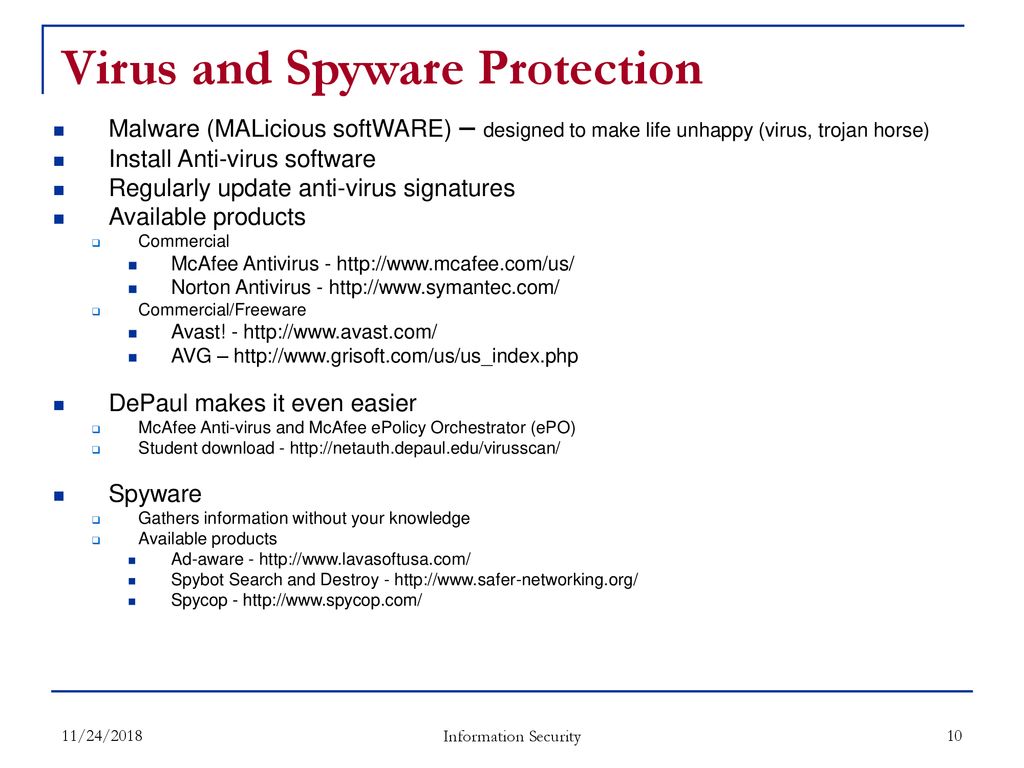
Antivirus software, while designed to protect users, possesses capabilities that could be exploited for malicious purposes. Its deep system access and ability to monitor user activity make it a potentially powerful tool for espionage if compromised or deliberately designed with malicious intent. The potential for misuse stems from the inherent trust users place in these programs and the extensive permissions they are granted.The modification of legitimate antivirus software to collect sensitive data beyond its stated purpose is a significant concern.
A compromised antivirus program could be weaponized to gather information ranging from keystrokes and browsing history to financial details and private communications. This is facilitated by the program’s already-existing access to system files, network traffic, and user processes.
Methods of Covert Data Exfiltration
A compromised antivirus program could employ several techniques for covert data exfiltration. Data could be encrypted and transmitted to a command-and-control server via seemingly innocuous network connections, masking the malicious activity. Alternatively, data could be embedded within legitimate software updates or system logs, making detection more challenging. The program might also utilize steganography, embedding data within seemingly harmless files like images or audio, for covert transfer.
Finally, the malware could use established communication channels, such as DNS tunneling or HTTP requests, to exfiltrate stolen data.
Vulnerabilities in Antivirus Software
Several vulnerabilities could be exploited for spying purposes. Software flaws, such as buffer overflows or memory leaks, could be leveraged to inject malicious code or gain unauthorized access to sensitive data. Poorly implemented security measures, like insufficient input validation or weak encryption, could also compromise the integrity of the antivirus software, enabling attackers to manipulate its functionality. Outdated or improperly configured antivirus software is especially vulnerable, providing an easier entry point for malicious actors.
For instance, a vulnerability in the update mechanism could allow attackers to inject malicious code disguised as a legitimate update.
Hypothetical Malware Leveraging Antivirus Access
Imagine a malware variant, “Trojan.AntiSpy,” designed to exploit the legitimate access privileges of an antivirus program. This malware would initially infect the system by exploiting a known vulnerability in the antivirus software itself or by leveraging a social engineering attack to trick the user into installing a seemingly legitimate update. Once installed, Trojan.AntiSpy would modify the antivirus’s core functionality to include a covert data collection module.
This module would secretly monitor user activity, capturing keystrokes, screenshots, and other sensitive information. This data would then be encrypted and transmitted to a remote server controlled by the attacker, all while the legitimate antivirus functions continued to operate, potentially masking the malicious activity. The sophisticated nature of this malware would make detection challenging, as it would appear as legitimate antivirus activity to most security tools.
The question of whether antivirus software can be used for spying is a valid concern in today’s digital world. It’s a complex issue, especially considering the vast amount of data these programs handle. Think about the level of access needed, and how that relates to the development of secure applications, like those discussed in this insightful article on domino app dev the low code and pro code future.
Ultimately, responsible development and robust oversight are crucial to ensure antivirus software doesn’t become a tool for unauthorized surveillance.
Legal and Ethical Considerations
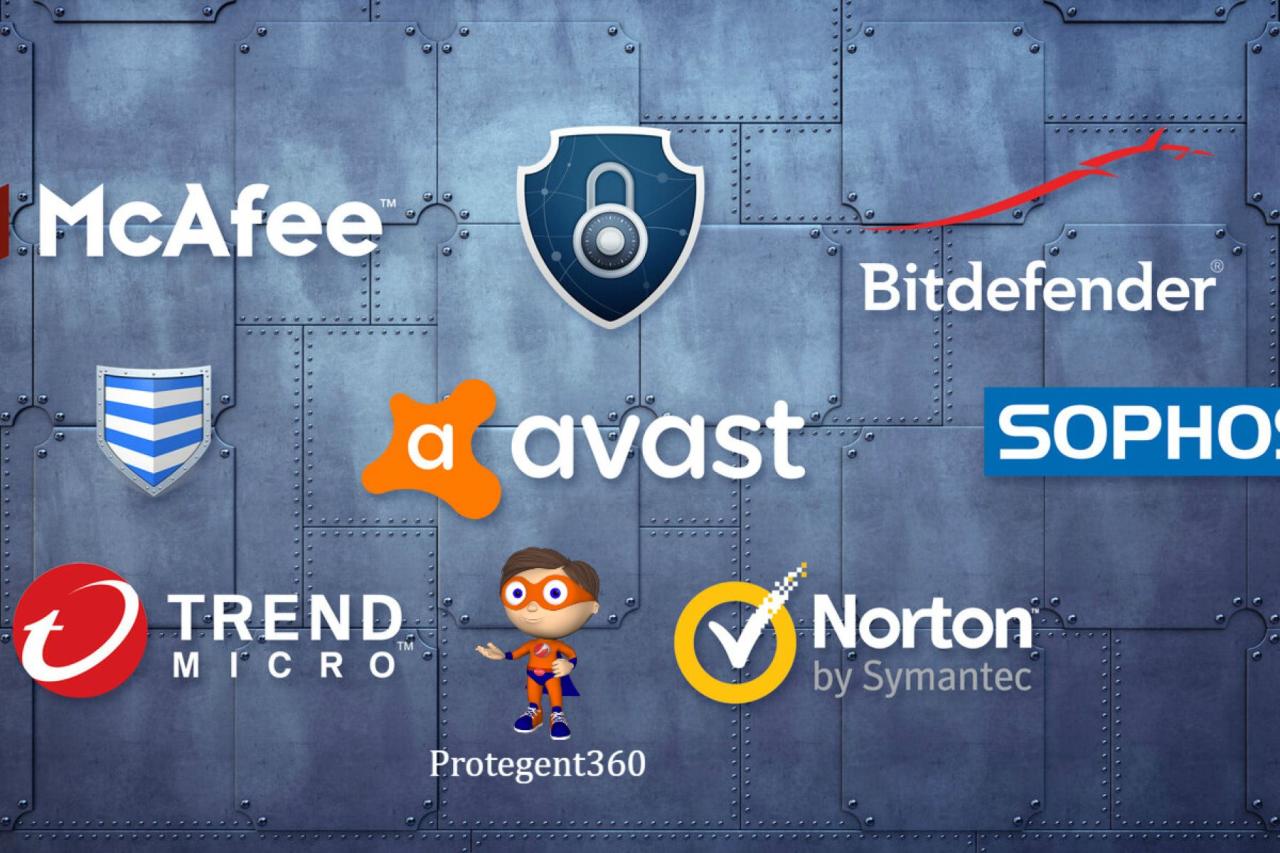
The use of antivirus software, while ostensibly designed for protection, raises significant legal and ethical questions when considering its potential for misuse as a surveillance tool. The fine line between legitimate security measures and unauthorized data collection necessitates a careful examination of existing legal frameworks and ethical principles governing data privacy and security. This section explores these considerations, focusing on relevant legislation, ethical implications, vendor practices, and the responsibilities of developers.
Legal Frameworks Regulating Data Collection
Numerous legal frameworks worldwide aim to regulate the collection and use of personal data by software applications. The General Data Protection Regulation (GDPR) in the European Union, for example, grants individuals significant control over their personal data, including the right to access, rectify, and erase their data. Similarly, the California Consumer Privacy Act (CCPA) in the United States provides California residents with similar rights.
These regulations often require companies to obtain explicit consent before collecting personal data, to be transparent about their data collection practices, and to implement robust security measures to protect the data they collect. Violation of these laws can result in substantial fines and legal repercussions. Other relevant legislation includes the Health Insurance Portability and Accountability Act (HIPAA) in the US, focusing on protected health information, and various national data protection acts across the globe.
These laws vary in their specifics but share the common goal of safeguarding individual privacy.
The question of whether antivirus software can be used for spying is a valid concern, especially given the increasing sophistication of such programs. Understanding the potential for misuse highlights the importance of robust cloud security, a topic explored in detail in this excellent article on bitglass and the rise of cloud security posture management. Ultimately, the same technological advancements that improve antivirus protection can also be leveraged for malicious purposes, emphasizing the need for careful consideration of data privacy and security measures.
Ethical Implications of Unauthorized Surveillance
The ethical implications of using antivirus software for unauthorized surveillance are profound. Such practices represent a significant breach of trust between the software vendor and the user. Users expect antivirus software to protect their systems, not to secretly monitor their activities. Unauthorized surveillance raises concerns about potential abuses of power, the erosion of privacy, and the chilling effect on freedom of expression and association.
The potential for misuse extends beyond individual users; organizations using antivirus software on employee devices face ethical dilemmas concerning employee monitoring and potential violations of privacy rights. The lack of transparency and informed consent are key ethical failures in such scenarios. Ethical guidelines, often rooted in principles of autonomy, beneficence, non-maleficence, and justice, are directly violated by such practices.
Antivirus Vendor Privacy Policies
A comparison of privacy policies across different antivirus vendors reveals significant variations in their data collection and usage practices. Some vendors explicitly state their commitment to minimal data collection, focusing solely on essential information for product functionality and security updates. Others may collect more extensive data, including browsing history, application usage, and potentially sensitive personal information. These differences highlight the importance of carefully reviewing the privacy policies before installing and using any antivirus software.
Users should be aware of what data is being collected, how it is being used, and whether it is being shared with third parties. A thorough understanding of the privacy policy allows users to make informed decisions about the software they choose to use. The lack of standardization in privacy policy language and practices makes direct comparison challenging, but independent security audits and reviews can provide valuable insights into the transparency and security measures implemented by various vendors.
Responsibilities of Antivirus Developers
Antivirus developers bear a significant responsibility in preventing the misuse of their software for spying. This responsibility encompasses several key areas. Firstly, developers must prioritize data minimization, collecting only the data strictly necessary for the software’s core functionality. Secondly, they should implement robust security measures to protect collected data from unauthorized access and breaches. Thirdly, they must be transparent about their data collection practices, providing clear and concise privacy policies that are easily understandable to users.
Fourthly, developers should actively work to prevent the exploitation of their software for malicious purposes, including implementing security features to deter unauthorized access and monitoring. Finally, they should engage in proactive efforts to educate users about the potential risks associated with antivirus software and empower them to make informed choices. These responsibilities are crucial in maintaining user trust and ensuring the ethical use of antivirus technology.
User Awareness and Protection
Protecting yourself from potential misuse of antivirus software requires a proactive approach. It’s crucial to understand how these programs function, how they might be compromised, and what steps you can take to mitigate risks. Remember, even legitimate software can be vulnerable to exploitation if not handled carefully.Understanding the intricacies of antivirus software and its potential vulnerabilities is the first step towards safeguarding your privacy.
This involves verifying the software’s authenticity, minimizing your exposure to malicious modifications, and adopting best practices for selection and usage.
Verifying Antivirus Software Integrity and Authenticity
Verifying the integrity and authenticity of your antivirus software is paramount to ensuring its trustworthiness. This involves several key steps. First, always download your antivirus software directly from the official vendor’s website. Avoid third-party download sites or unofficial sources, as these could distribute modified or malicious versions. Second, check the digital signature of the installation file.
Reputable antivirus vendors digitally sign their software to verify its authenticity. Most operating systems provide tools to check digital signatures. Finally, regularly check for updates. Outdated antivirus software is more vulnerable to exploits. The vendor’s website or the software itself will usually notify you of available updates.
Minimizing Risk of Spying Through Antivirus Software
Minimizing the risk of being spied upon through your antivirus software requires a multi-faceted approach. First, carefully review the software’s privacy policy and permissions. Understand what data the software collects and how it uses this data. If the privacy policy is unclear or raises concerns, consider using a different antivirus program. Second, choose an antivirus program from a reputable vendor with a strong track record of security and privacy.
Third, keep your operating system and other software up-to-date. Outdated software is more susceptible to malware and exploits that could compromise your antivirus software. Finally, be wary of unsolicited emails or messages promoting antivirus software. These may be attempts to distribute malicious programs.
Best Practices for Selecting and Using Secure Antivirus Software
Choosing and using secure antivirus software involves careful consideration. Here’s a guide outlining key best practices:
- Choose a reputable vendor: Select antivirus software from a well-known and trusted vendor with a proven track record of security and privacy.
- Read reviews: Before installing any antivirus software, read independent reviews to get a sense of its performance and user experience.
- Check the privacy policy: Carefully review the software’s privacy policy to understand what data it collects and how it uses this data.
- Keep the software updated: Regularly update your antivirus software to ensure you have the latest protection against emerging threats.
- Enable essential features: Enable essential security features such as real-time protection, malware scanning, and phishing protection.
- Avoid free antivirus programs with excessive advertising or bundled software: These often come with privacy concerns and may compromise your security.
- Regularly scan your system: Perform regular full system scans to detect and remove malware.
- Be cautious of suspicious emails and attachments: Avoid opening emails or attachments from unknown senders.
Red Flags Indicating Malicious Activity Within an Antivirus Program
Several red flags might indicate malicious activity within an antivirus program. These include:
- Unexpected high CPU or disk usage: A legitimate antivirus program might consume some resources, but unusually high usage could suggest malicious activity.
- Unusual network activity: Noticeable increases in network traffic or connections to unfamiliar servers could indicate data exfiltration.
- Changes to system settings without your consent: Unauthorized modifications to your system’s firewall, browser settings, or other critical configurations are major red flags.
- Pop-up messages with urgent warnings: Legitimate antivirus programs may issue warnings, but excessive or overly alarming messages could be a tactic to manipulate you.
- Unusually high number of detected threats: While some threats are real, an excessively high number of detected threats, especially those you’re unfamiliar with, warrants investigation.
- Software behaving unexpectedly: If the antivirus program crashes frequently, behaves erratically, or shows other unexpected behavior, it may be compromised.
Technical Analysis of Data Collection
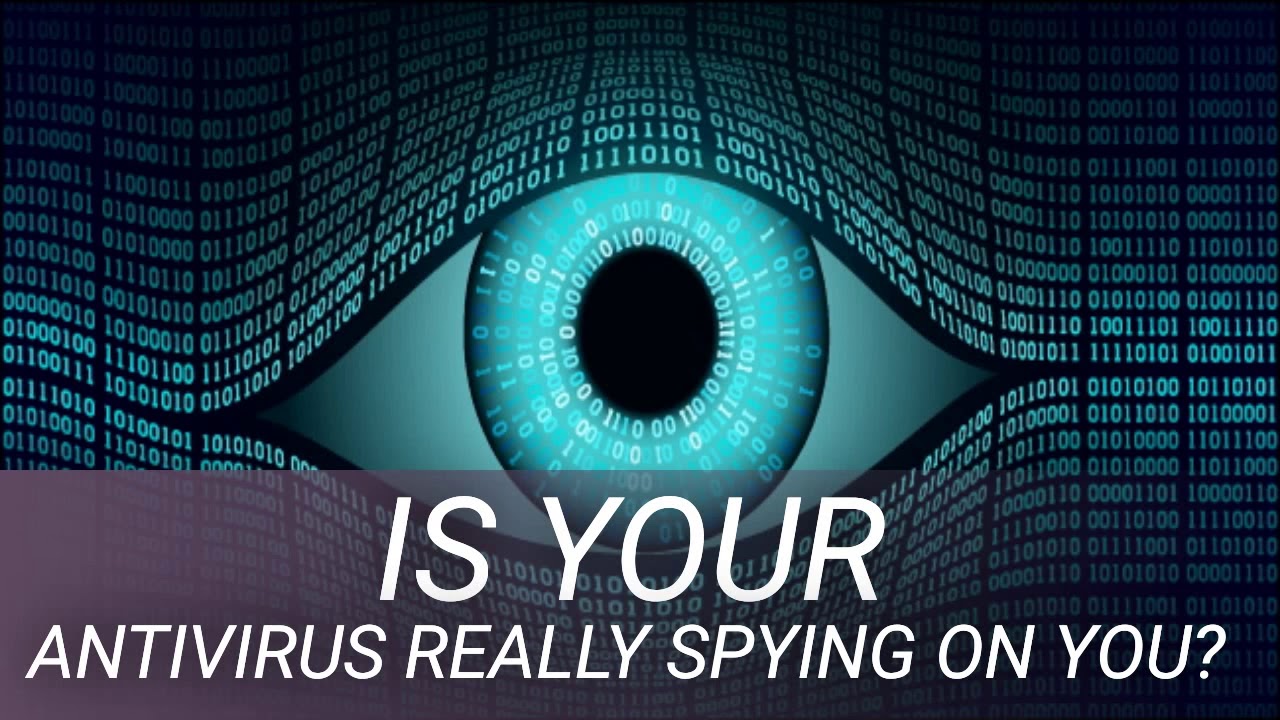
Antivirus software, while designed to protect users from malware, inevitably collects a significant amount of data about system activity and user behavior. This data collection, while often necessary for effective malware detection, raises concerns about potential misuse for surveillance purposes. Understanding the types of data collected, how it’s processed, and the potential for its exploitation is crucial for a balanced perspective on the security implications of antivirus software.Antivirus software commonly collects a variety of data to perform its functions.
This includes information about installed applications, running processes, file system activity (including file names, access times, and content), and network traffic. The potential uses for surveillance are significant. For example, detailed file system activity logs could reveal sensitive documents accessed or created by a user. Information about running processes could be used to track application usage and infer user interests or activities.
Network traffic analysis can reveal websites visited, communications with online services, and potentially even the content of encrypted communications if weaknesses are exploited.
Types of Data Collected and Their Surveillance Potential
Antivirus software routinely gathers data categorized into several key areas. System information, such as the operating system version, hardware specifications, and installed software, provides a profile of the user’s device. File system activity logs meticulously record file creations, modifications, deletions, and accesses, potentially exposing sensitive document content or revealing user habits. Network traffic analysis captures details of all network connections, including destinations, protocols, and data volumes.
This data can reveal visited websites, used services, and communication partners. Finally, process information records all running processes, revealing application usage and potentially revealing sensitive user activities. The potential for misuse is clear; a comprehensive record of these activities provides a detailed picture of a user’s digital life.
Network Traffic Analysis and Sensitive Information Inference, Can antivirus software be used as a spying tool
Network traffic analysis, a core function of many antivirus programs, involves monitoring and analyzing data packets transmitted over the network. While this is primarily used to detect malicious activity, it can also be used to infer sensitive user information. For instance, by analyzing the domain names accessed, an antivirus program can identify websites visited. Analyzing the content of unencrypted HTTP traffic (although this is less common due to HTTPS prevalence) can reveal user login credentials, personal details, and even sensitive financial information.
Even encrypted traffic, while protecting the content itself, still reveals the communication partners and the frequency and volume of communication, potentially revealing sensitive relationships or activities. Consider a scenario where an antivirus program consistently flags connections to a particular encrypted server; this might not directly reveal the content of communication, but it could indicate participation in a potentially sensitive activity, depending on the context.
Data Obfuscation and Encryption Techniques
To protect user privacy and comply with regulations, some antivirus vendors employ techniques to obfuscate or encrypt the data they collect. This often involves hashing sensitive data (like filenames or URLs) before storing it, making it difficult to directly reconstruct the original information. Encryption, on the other hand, uses cryptographic algorithms to transform the data into an unreadable format, requiring a decryption key to access the original information.
However, the effectiveness of these techniques depends on the strength of the algorithms used and the security of the key management process. Weaknesses in these areas could allow unauthorized access to the collected data, undermining the intended privacy protections. A well-designed system would employ strong encryption, regular key rotation, and secure key storage to minimize the risk of data breaches.
Data Flow within a Typical Antivirus Program
Imagine a diagram showing the data flow within a typical antivirus program. It would start with the various data sources (file system, network interface, processes). This data flows to a central processing unit, where it’s analyzed for malicious activity. A crucial point of compromise is the central processing unit itself; malicious code within the antivirus software could divert or alter the data flow, potentially allowing unauthorized access to the collected data.
The processed data, including potentially sensitive information, is then stored in a database, another potential point of compromise. Finally, reports and logs are generated, which may contain summarized or raw data, presenting further potential vulnerabilities. The security of each component in this data flow is crucial for preventing unauthorized access and ensuring user privacy.
Final Conclusion: Can Antivirus Software Be Used As A Spying Tool
The question of whether antivirus software can be used as a spying tool isn’t a simple yes or no. While the vast majority of antivirus programs are developed with good intentions, the inherent access they require creates a potential for misuse. Understanding the technical capabilities of these programs, coupled with a proactive approach to security awareness and responsible software selection, is paramount.
By staying informed and practicing good digital hygiene, we can mitigate the risks and ensure our antivirus software remains a shield, not a weapon, against malicious actors.
Q&A
What data does antivirus software typically collect?
Commonly collected data includes file system activity, network traffic, and potentially even keystrokes depending on the software’s features and configuration. The purpose is usually to detect threats, but this data could be misused.
How can I verify the integrity of my antivirus software?
Download only from the official vendor’s website, verify digital signatures, and regularly check for updates. Look for inconsistencies in the software’s behavior.
Are all antivirus programs equally risky?
No. Reputable vendors with strong security practices and transparent privacy policies generally pose less risk. Research different vendors before choosing one.
What are the legal consequences of using antivirus software for spying?
This is highly dependent on jurisdiction and the specific actions taken. Unauthorized surveillance is illegal in many places and carries severe penalties.
